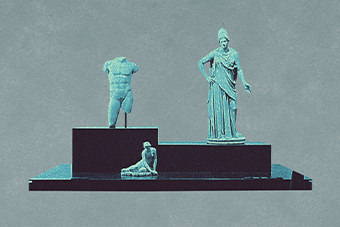The red-brick facade of Shaheed Dr. Diwan Singh Kalepani Museum stands quietly at Siswan in Mohali district, about 15 km from Chandigarh. Hailing from Ghalotian Khurd village in present-day Pakistan, Dr. Diwan Singh was a Punjabi poet and medical practitioner who died fighting colonial powers in the prison at Andaman, where he has been imprisoned for opposing the British colonial powers.
Born in the year 1897, he joined the Indian Army as a doctor after graduating from Agra Medical Institution in 1919 and was posted in Rawalpindi. During his posting in Lahore in 1922, he corresponded with many Punjabi and Urdu writers. This was also the time when he was influenced by Gandhian ideals and took up the cause of Swaraj. In 1925 he was transferred to Rangoon in Burma or today’s Myanmar, which was also a British colony at the time. It is said that this transfer was a punishment for his efforts to campaign for Swaraj. Then in 1927, he was transferred again, this time to Port Blair, Andaman. Here he served in the dreaded Cellular Jail, colloquially known as Kalapani (literally, ‘black waters’) jail. The British authorities exiled freedom fighters to this prison on the islands of Andaman, away from the mainland, surrounded by the deep waters of the Bay of Bengal. Here he took up the pen-name ‘Kalepani’ to mark this chapter of his life.
Apart from treating the prisoners, Dr. Diwan Singh also took part in community building among the local Indians, most of whom were ex-convicts. The one Gurudwara on the island only admitted Sikh policemen and army members into its precincts. Diwan Singh took the initiative to build another Gurudwara, .the Nava Gurudwara, were not only Sikh civilians, but people of every faith were welcome. The first management committee of the Gurudwara had Sikh, Hindu, Muslim, and Christian members. He also built a school where several languages like Punjabi, Tamil, Bengali, and Urdu were taught.
He was writing poetry in Punjabi and Urdu at this time. The anthology Vagde Pani (Running Water) was published in 1938. Most of his poems are in blank verse. In 1942, during World War II, the Japanese Navy took over the Andaman islands. Diwan Singh, at the time, was the head of the local Indian Independence League. He was arrested for espionage in 1943 and imprisoned in the Cellular Jail, where he was tortured by the Japanese forces. He passed away on January 14, 1944. His other anthologies, Antim Lehran and Malhian de Ber were published posthumously. When his son Mohindar Singh Dhillon visited Andaman along with his wife in 1968, the love and respect for his father that he experienced among the Andaman locals inspired him to work on a biography of Diwan Singh, which was published in 1994 titled A Titan in the Andamans.
The Museum in Siswan, which was inaugurated in 2013, came into being due to the effort of Mohindar Singh’s wife Gurdarshan Kaur, daughter Sonia Dhillon and other family members. The land was a gift from Diwan Singh’s grandson Gurpartap Singh Dhillon. A tall statue of Dr. Diwan Singh greets the visitors on the outside. The Museum has five sections where carefully curated photographs and writings bring alive the story of this memorable personality. In the first one a television screen displays a timeline of Dr. Diwan Singh’s life as well as important historical events at the national and international level at the time. The second section called ‘Punjabiyat’ demonstrates his intimate relation with Punjabi culture and showcases his written work and interactions with other literary figures of the time. The third and the fourth sections deal with his work as a devout Sikh and ultimately a brave and compassionate human being. The trail ends with a replica of the doctor’s 14ft x 7ft x 10 ft. cell in the Andaman prison where he spent his last days. Additionally, there is a library that displays his books, articles written on him, archival notes related to his life, etc.
+More Information
Getting there
Road:15 km from Baddi Chandigarh Road.
Average duration of visit
1-2 hours
Best time of the day to visit
Most Crowded: 12 pm - 1 pm
Least Crowded: 1 pm - 3 pm
Museum administered by
Dr. Diwan Singh Kalepani Trust
Person in charge
Updated
https://www.indiatoday.in/magazine/supplement/story/20180423-secret-in-the-city-tales-from-kalapani-1211448-2018-04-12
Quick Facts
Address:
Chandigarh Baddi Rd, Near Siswan, Punjab - 140110
Visiting Time:
Sunday: 9 am - 5 pm
Monday: Closed
Tuesday: 9 am - 5 pm
Wednesday: 9 am - 5 pm
Thursday: 9 am - 5 pm
Friday: 9 am - 5 pm
Saturday: 9 am - 5 pm
The Museum remains closed on public holidays.
Entry Fees:
Entry is free.




